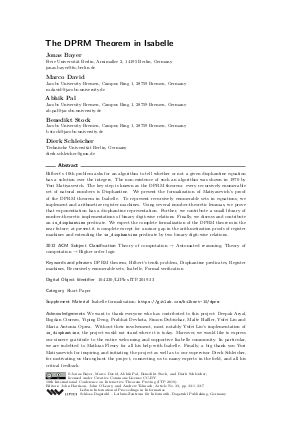LIPIcs.ITP.2019.33.pdf
- Filesize: 428 kB
- 7 pages

 Creative Commons Attribution 3.0 Unported license
Creative Commons Attribution 3.0 Unported license




Feedback for Dagstuhl Publishing